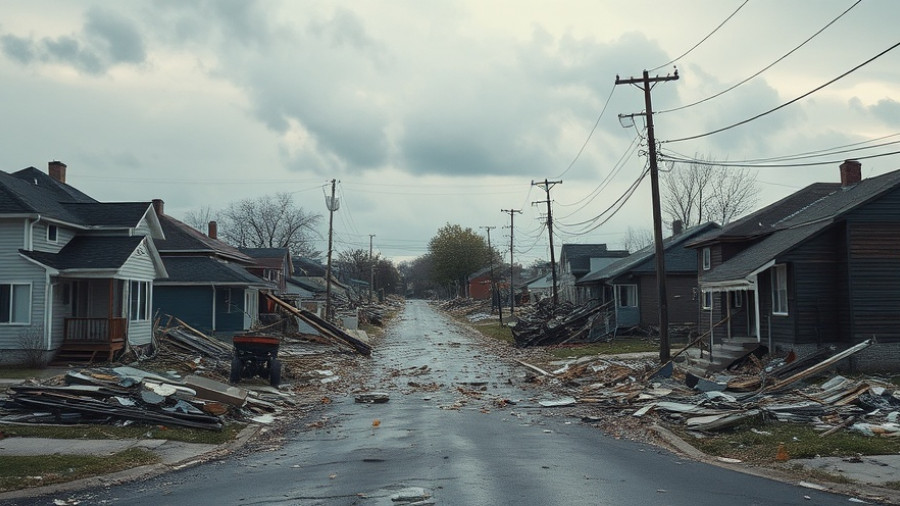
Unveiling the Hidden Threat: Smaller Hail's Risk to Roofs
A recent study by the Insurance Institute for Business and Home Safety (IBHS) has revealed troubling insights regarding the impact of smaller hailstones—those often deemed insignificant by property insurers—on roof integrity. The findings suggest that roof damage from hailstones smaller than 1 inch may be far more severe than previously believed. This new understanding raises important questions for South Carolina homeowners grappling with insurance claims related to hail damage, particularly amidst growing reports of claim denials.
Understanding the Study's Implications
The IBHS study, published in the journal Frontiers in Materials, notes that frequent exposure to sub-severe hail not only compromises the roof's resistance to future severe hail events but exacerbates the aging of asphalt shingles. Such revelations challenge long-held assumptions within the insurance industry that hail damage is typically limited to larger stones, which are classified as "severe" by the National Weather Service. Often, policies are designed to cover events where hail exceeds 1 inch, leaving homeowners vulnerable if they face damage from smaller hail. As attorney Chip Merlin aptly put it, dismissing damage from smaller hailstorms runs counter to the emerging evidence.
What Homeowners Should Watch For
South Carolina residents should be aware of the subtle signs of damage from smaller hail. One common indicator is the accumulation of shingle granules in gutters and downspouts after storms. This granule loss leads to asphalt exposure, increasing the risk of UV damage and deterioration. Homeowners may not realize that even small hail can cause bruising or indentations, creating a water vulnerability that might not manifest immediately.
Insurance Insights: Navigating Claims Related to Hail Damage
For those dealing with claims after a hail event, it’s crucial to understand your insurance policy's nuances. As noted by attorney John Riordan, many policies have specific exclusions regarding long-term wear and tear, meaning that claims based on cumulative damage from multiple hail events might be dismissed. This further emphasizes the need for thorough documentation and prompt reporting following a hailstorm, as delays can complicate the claims process. Homeowners should prioritize inspecting their roofs post-storm to identify potential damage early.
Strategies for Filing a Successful Claim
As you navigate the stormy waters of insurance claims, consider a few strategic steps to enhance your likelihood of a favorable outcome:
- Document Everything: After a hailstorm, take photos of your roof and any visible damage, such as granule loss or cracked shingles. Keep track of storm timelines and the conditions surrounding each incident.
- Engage with Your Adjuster: When speaking with your insurance adjuster, be transparent about the age and condition of your roof prior to the storm, as this can affect claims assessments.
- Seek Professional Assessments: If in doubt, hire a licensed roofing professional to perform a thorough evaluation and provide a detailed report, which can bolster your claim.
Don't Ignore The Small Stuff
It’s essential to acknowledge the emerging evidence surrounding smaller hail's impact on roof longevity. Homeowners in areas prone to such storms must take proactive steps to protect their property and navigate the often-complex insurance claims process. This study could mark a turning point in recognizing the full extent of hail damage, potentially leading to better coverage options and increased awareness among both consumers and insurers.
If you've faced delays or denials in your insurance claims, now is the time to reassess your strategy. Take action today by reviewing your coverage, understanding your claim rights, and reaching out for professional guidance where needed.
 Add Row
Add Row  Add
Add 




Write A Comment